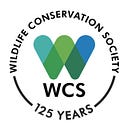Protecting Latin America’s Largest Freshwater Turtle at the Bolivia-Brazil Border
By Camila Ferrara & German Forero-Medina | January 10, 2022
During September and November of this year, over 80,000 females of the Giant South American River Turtle (Podocnemis expansa) arrived at the Boliva-Brazil border to nest on the sand banks of a river known as the Guaporé in Brazil and the Itenez in Bolivia. This is the largest concentration of individuals from this species and quite likely the largest such concentration of all freshwater turtle species globally.
The mass nesting is a wonder of nature and an essential process for the ecology of this incredible river. The hundreds of thousands of hatchlings produce food and biomass for other aquatic and terrestrial species while contributing to the river’s food chain. During November and December, hundreds of thousands of hatchlings emerge free, searching for the river waters.
Once counted in the millions across the tributaries of the Orinoco and Amazon, the Giant South American River Turtle population has been drastically reduced because of historical overharvest for oil, meat, and trade.
P. expansa is one of the most threatened species in the Amazon. Once counted in the millions across the tributaries of the Orinoco and Amazon, its populations have been drastically reduced because of historical overharvest for oil, meat, and trade.
The sandbanks of Guaporé/Itenéz River currently represent the most important nesting area for this species and contain the largest known population in the world. The Guaporé/Iténez River is located in the Brazil-Bolivia border and turtles nest in sandbanks on both sides of the divide.
WCS is combining the efforts of its country programs in Bolivia and Brazil to develop a coordinated multi-national push to conserve this key population of the species.
In 1999, the NGO Ecovale started a conservation program to protect P. expansa nesting beaches of both countries in the region in coordination with the Versalles community, which also develops its own conservation activities for the species in Bolivia.
WCS (Wildlife Conservation Society) is combining the efforts of its country programs in Bolivia and Brazil to develop a coordinated multi-national push to conserve this key population of the species. Challenges include the long distance from the reproductive sandbanks to the nearest cities, the lack of stable funding, and the political complications stemming from a population located on the border of two countries that each have different policies.
Because of the area’s importance for P. expansa and its geographical location, WCS intends to strengthen and support long-term conservation of the species in the broader Amazon and Orinoco basins. We are working with the Ecovale, Versalles community in Bolivia, environmental agencies from both countries, and local people.
We are also developing an “Action Plan” and guidelines with protocols to protect, monitor, and manage nesting sites, hatchlings, and adult females — as well to implement new technologies for a better estimation of the number of nesting females. With these actions, we hope to ensure the continued health of this special turtle and its role in its riverine ecosystem for years to come.
Camila Ferrara is an Aquatic Ecologist with the Brazil Program at WCS (Wildlife Conservation Society). German Forero-Medina is Science and Species Director for WCS Colombia.
